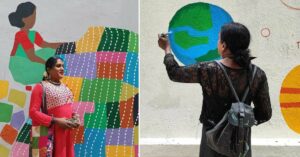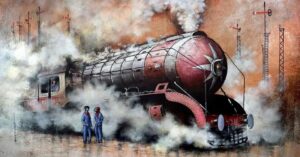In Photos: Bengal Postmaster Single-handedly Revives Dying Art of Kalighat
Over his 40 years of hard work and dedication, Kalam Patua has mastered the Kalighat art that is often infused with humour, satire and socially relevant issues.

In the cramped bylanes of Rampurhat in West Bengal resides Kalam Patua, one of the last few remaining exponents of Kalighat painting, which draws on conventions from West Bengal scrolls and Indian miniature painting.
While the 58-year-old is a postmaster by day, by night, he silently strives to reinvent the lost art of Kalighat by giving it a contemporary twist.
Kalam’s artistic sensibilities were spotted by his uncle, Baidyanath Patua, and he learnt to draw and paint in the ancient patachitra scroll style at the age of ten under his watchful guidance. As he grew older, he became intrigued by and subsequently, taught himself the Kalighat style of painting.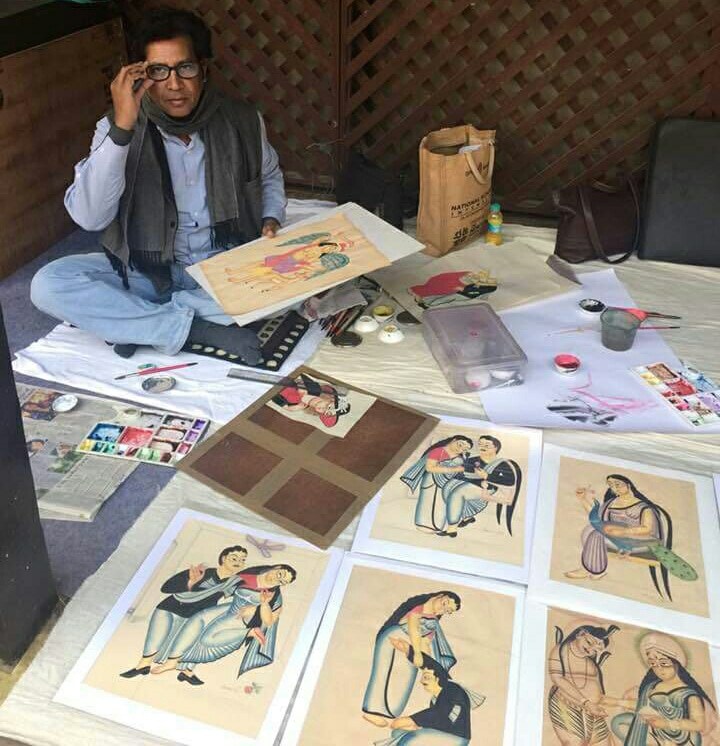
Kalighat painting developed in the mid-19th century in Kolkata (formerly Calcutta). While it started with the illustrations of Hindu gods and goddesses, it eventually transcended into illustrating the lives of urban dwellers.
“I grew up making 13th-century patachitra or cloth paintings that depict the rural way of life in traditional folktales, mythologies. However, the Kalighat patachitra is a medium of urban satire that brings to light socially relevant issues which started disappearing with the advent of printed pictures and calendars,” Kalam tells The Better India.
Even though Kalam’s talent was obvious, his parents insisted on getting a stable job as the ancient craft was slowly dying. So, he completed schooling in 1981 and joined the local post office as a postman.
This was around the same time when he learnt that only a handful of artists possessed this unique technique, and took it upon himself to do something for the vibrant and beautiful art form.
Kalam started participating in state-level painting competitions and workshops to get in touch with like-minded artists and work towards preserving this style. In 1987, he won the third prize in a painting competition in Medinipur. He worked his way up for the next couple of years and went on to win several competitions.
In the last few decades, thanks to his practice and utmost dedication, he has established himself at the forefront of contemporary Kalighat painters.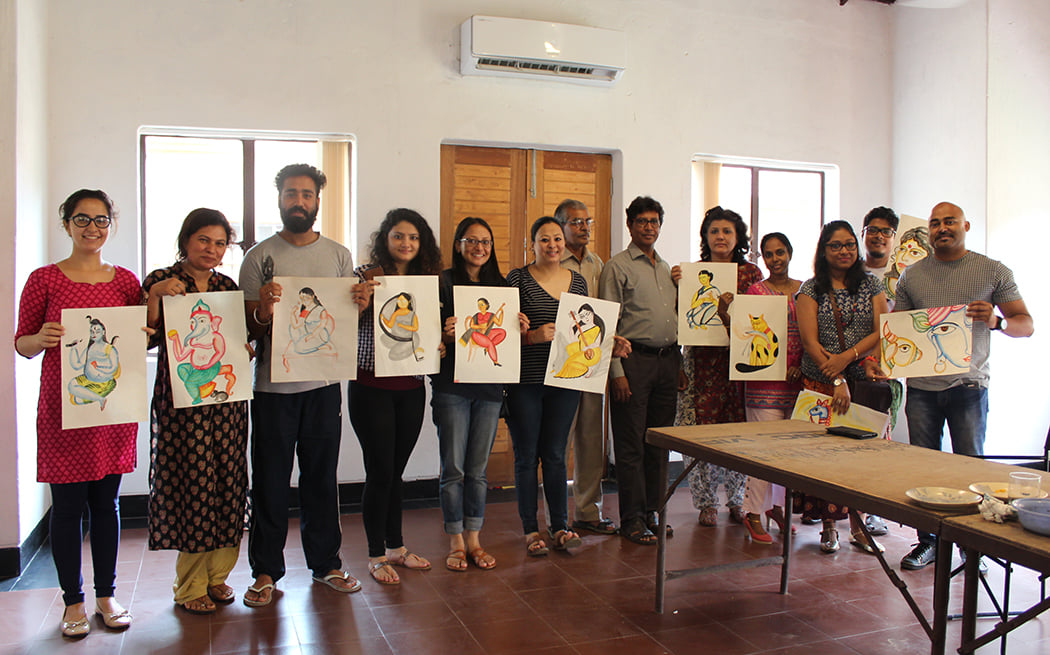
His work has been exhibited extensively in national and international museums including the National Museum at Liverpool, the Museum of Civilization in Canada and the Victoria and Albert Museum in London.
He also receives regular invitations from fine art institutions, and collaborate with several government departments to organise workshops.
Kalam’s paintings (mostly on paper) have subtle use of colours and are infused with tension, unease and shades of humour, making everyday mundane life fascinating.
From drawing a couple watching the 9/11 tragedy on television to a middle-aged man admiring a skimpily-clad mannequin, Kalam’s themes incorporate socio-political tales including consumerism, dowry, feminism, communal harmony, historical revolutions and sexuality.
Kalam creates the same art that his ancestors practised for over 300 years, but because of the twist he imparts to them, he has gone beyond the pull of lineage to create art which is entirely his own.
Here is a look at some of his Kalighat paintings.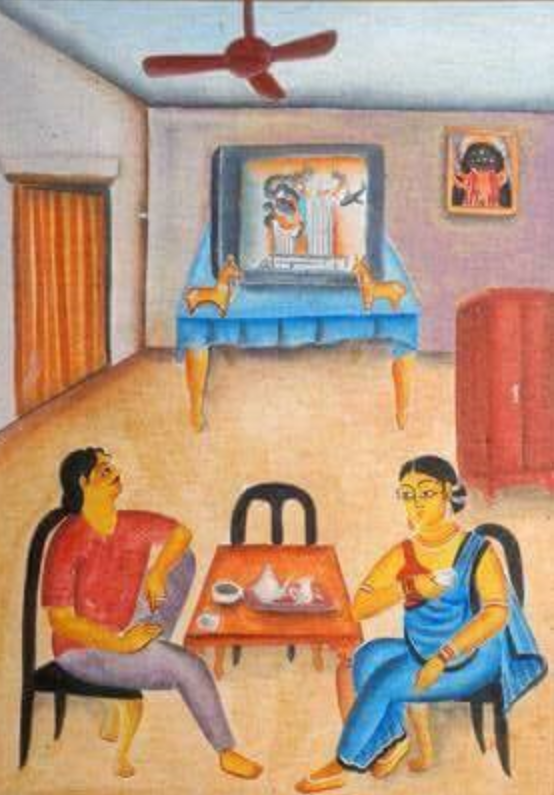
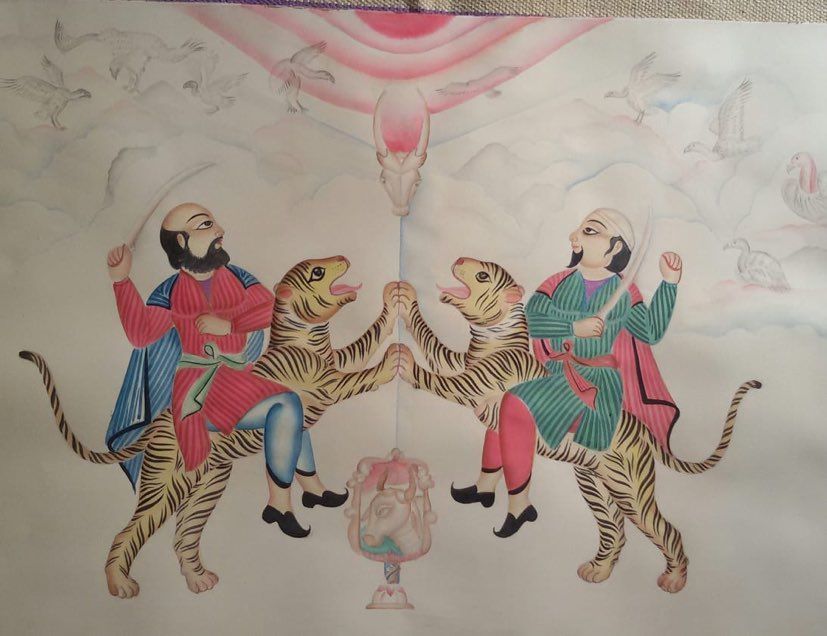

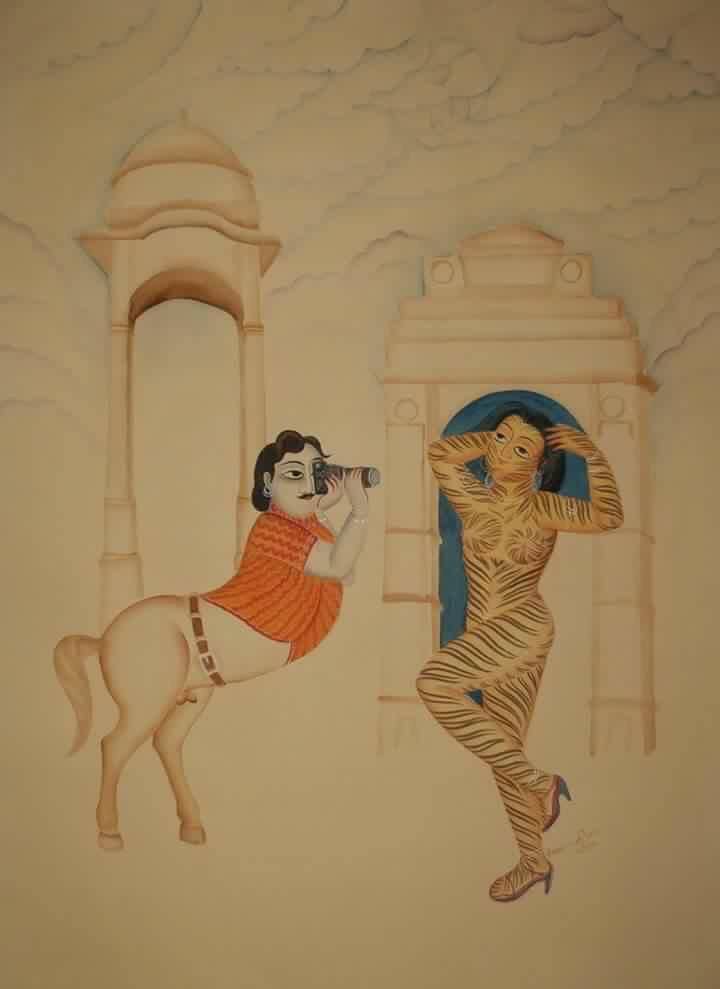
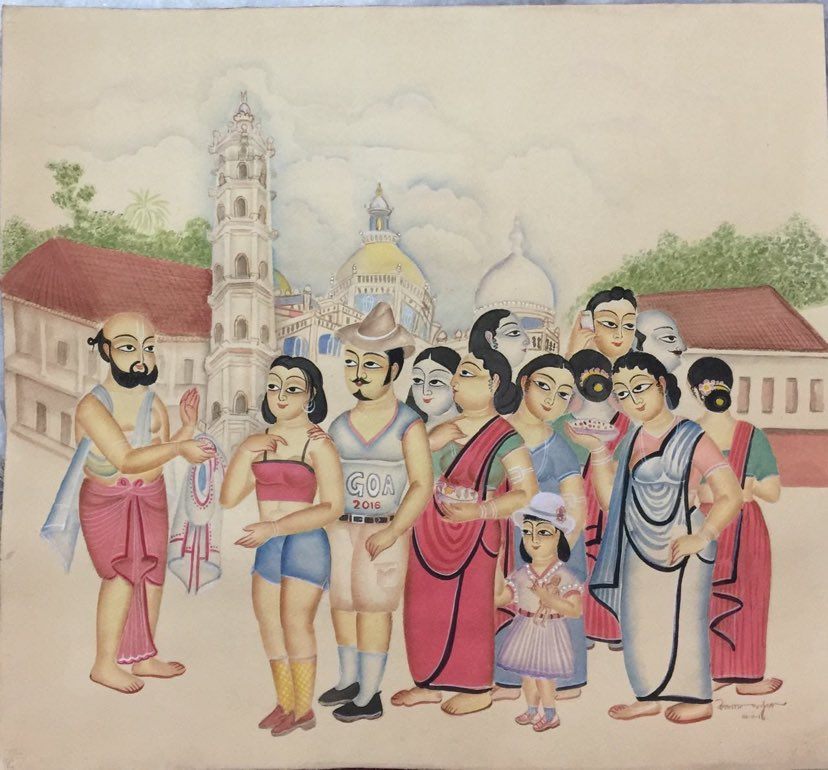


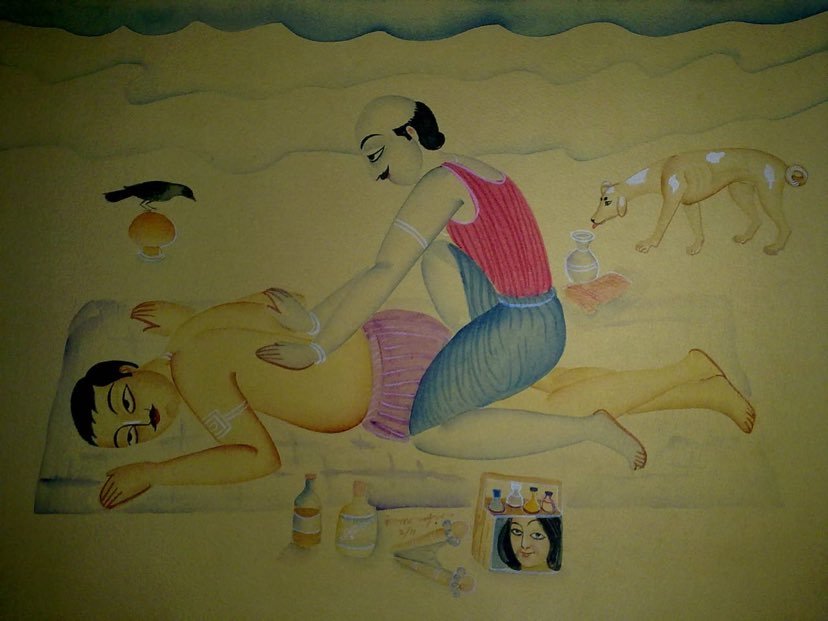
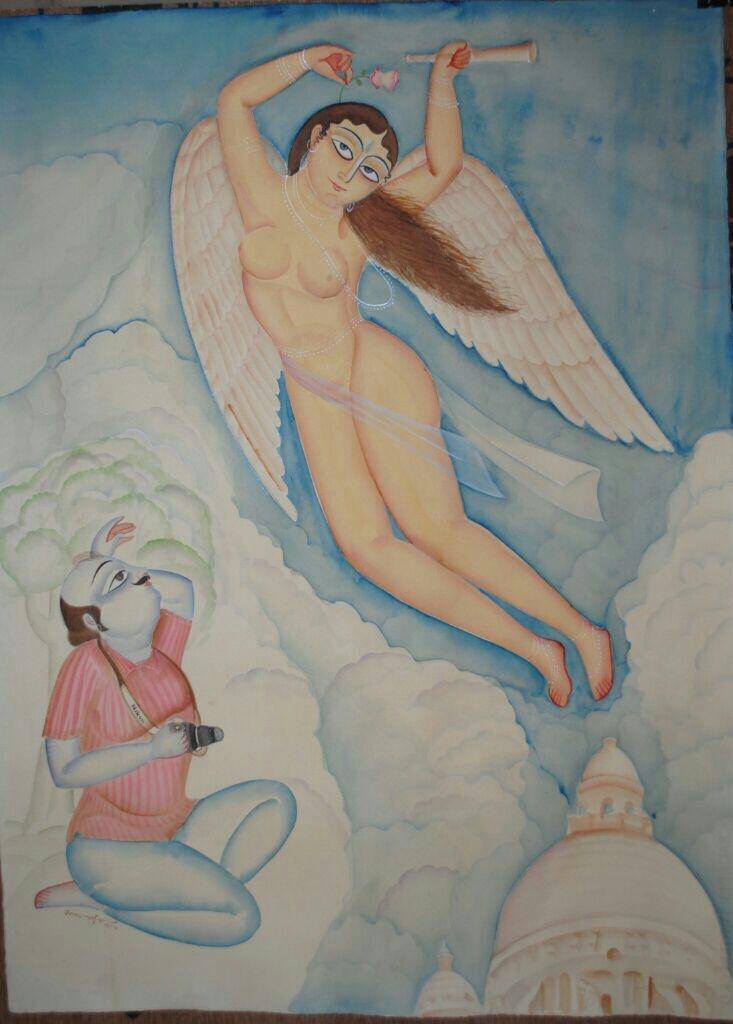


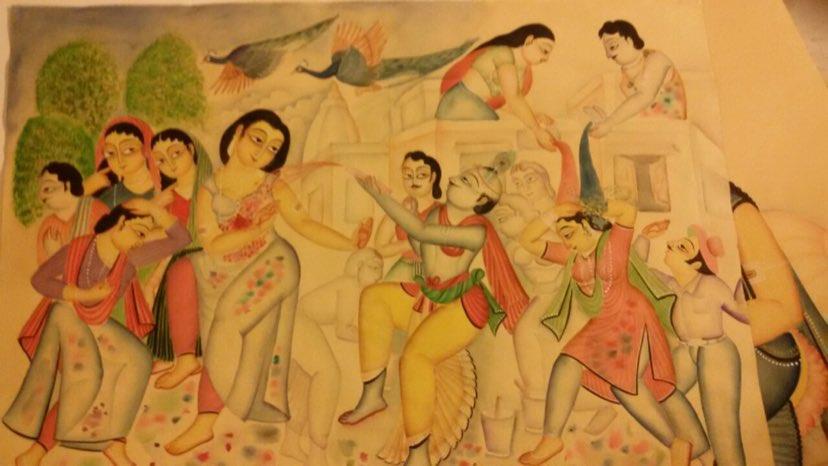
All the images are sourced from Kalam Patua
(Edited by Gayatri Mishra)
Like this story? Or have something to share?
Write to us: [email protected]
Connect with us on Facebook and Twitter.
This story made me
- 97
- 121
- 89
- 167
Tell Us More
We bring stories straight from the heart of India, to inspire millions and create a wave of impact. Our positive movement is growing bigger everyday, and we would love for you to join it.
Please contribute whatever you can, every little penny helps our team in bringing you more stories that support dreams and spread hope.







